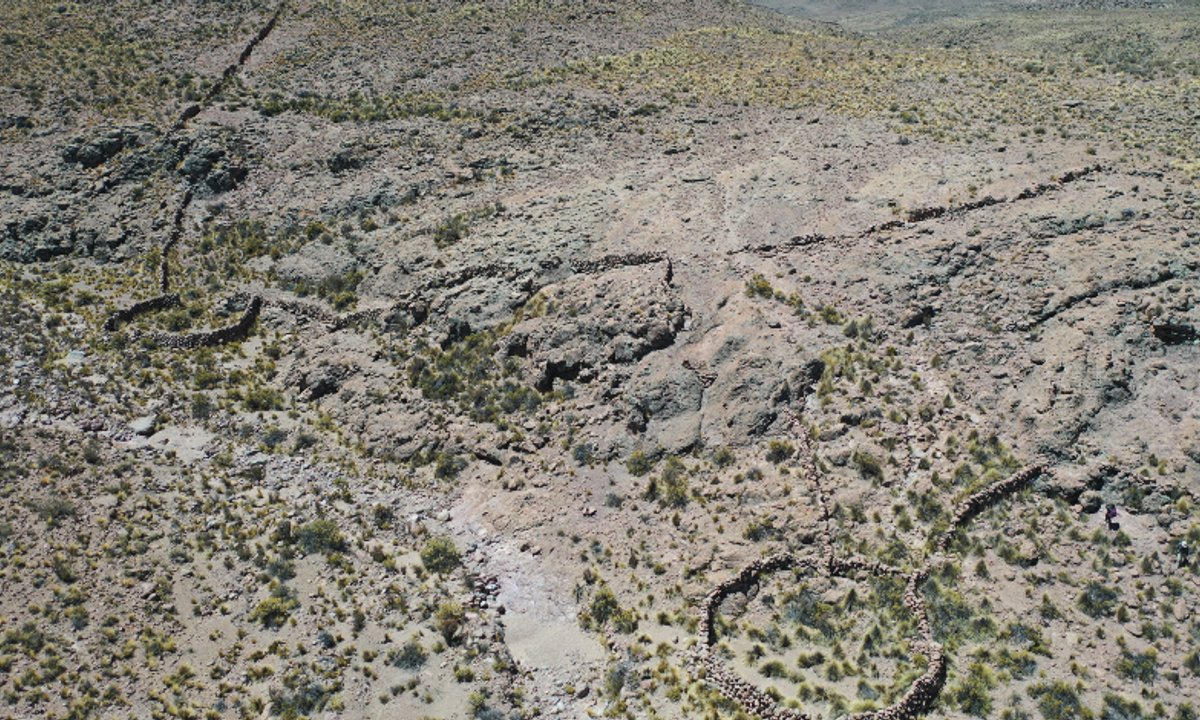
""Prior to my research, fewer than a dozen such traps were known across the entire pre-Hispanic Andes," Adrián Oyaneder, author of the research paper and an archaeologist at the University of Exeter in the UK, tells The Art Newspaper. "However, in parallel with a French research team, I was able to demonstrate that these structures are heavily concentrated in the Camarones Valley, where we documented 76 examples with strong indications of at least 100 more further to the south.""
"Often constructed on steep hill slopes, the traps consist of two or more long dry-stone walls, with a dominant "arm", on average 181 metres in length, and a shorter one of around 97 metres. The space between these arms narrows as they head downhill, forcing animals to move from higher ground towards a two-metre-deep drop, where they would fall into a structure designed to contain them. In the Andes, hunters typically used such traps to capture wild camelids, particularly vicuñas, a relative of the alpaca."
Satellite imagery covering about 4,600 sq. km of Chile's Camarones River Basin, with emphasis on upland areas, revealed a dense concentration of large chacu hunting traps. Seventy-six confirmed funnel-shaped trap systems were recorded, with strong indications of at least 100 additional installations further south. The traps feature long dry-stone walls forming narrowing arms—averaging 181 metres for the dominant arm and about 97 metres for the shorter arm—leading animals downhill toward a two-metre-deep drop into containment structures. The devices were used to capture wild camelids such as vicuñas and show formal and functional parallels with desert kites elsewhere, implying prolonged hunter-gatherer activity in the region.
Read at The Art Newspaper - International art news and events
Unable to calculate read time
Collection
[
|
...
]